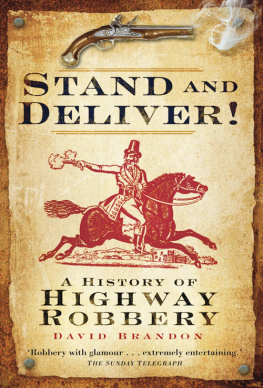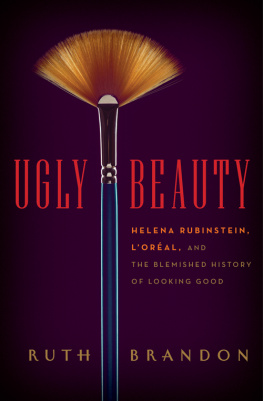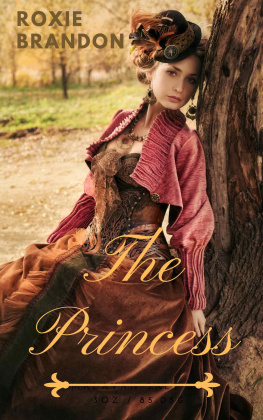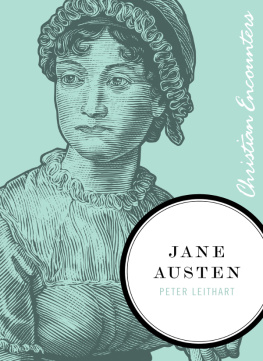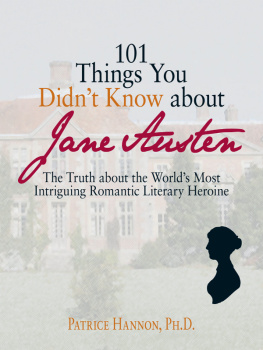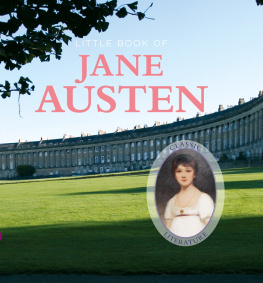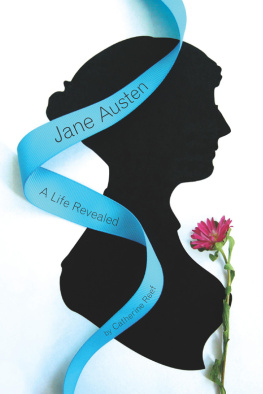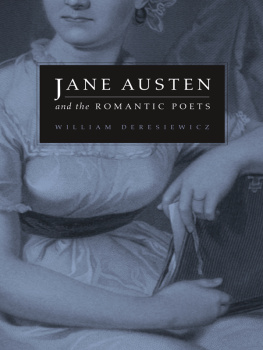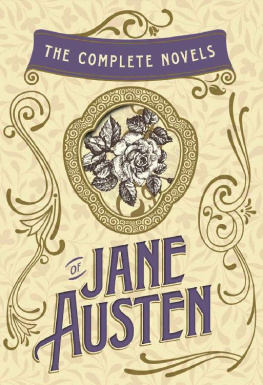Governess
The Lives and Times of the Real Jane Eyres

RUTH BRANDON

Copyright 2008 by Ruth Brandon
All rights reserved.
You may not copy, distribute, transmit, reproduce, or otherwise make available this publication (or any part of it) in any form, or by any means (including without limitation electronic, digital, optical, mechanical, photocopying, printing, recording, or otherwise), without the prior written permission of the publisher. Any person who does any unauthorized act in relation to this publication may be liable to criminal prosecution and civil claims for damages. For information address Bloomsbury USA, 1385 Broadway, New York, NY 10018.
Published by Bloomsbury USA, New York
Bloomsbury is a trademark of Bloomsbury Publishing Plc
LIBRARY OF CONGRESS CATALOGING-IN-PUBLICATION DATA
Brandon, Ruth.
Governess : the lives and times of the real Jane Eyres / Ruth Brandon.-1st U.S. ed. p. cm.
Includes bibliographical references and index.
1. GovernessesEnglandBiography. 2. WomenEducationEnglandHistory. I. Title.
LC41.B73 2008
649.10942-dc22
2008000369
First published in the U.S. by Walker Publishing Company in 2008
Published simultaneously in the United Kingdom by Orion with the title Other Peoples Daughters
This e-book edition published in 2011
eISBN: 978-0-80277-975-5
To find out more about our authors and books visit www.bloomsbury.com. Here you will find extracts, author interviews, details of forthcoming events and the option to sign up for our newsletters.
To Nicky Brooker and Annette Kobak Girton girls
and in memory of June Benn
Contents


I should like to thank the Authors Foundation for their kind and generous support.
Jennifer Sharp first suggested I might write a book about governesses. Allan and Bindi Doig, Lyndall Gordon, Sheila Hillier, Jan Marsh, Joanna Martin, Thomas Methuen-Campbell, Jinty Nelson, Miranda Seymour and Susan Skedd all offered much appreciated help of various kinds, as did Bruce Barker-Benfield and his staff at the Bodleian Library in Oxford, Kate Perry at Girton College, Cambridge, the staff at London Metropolitan Archives, and Nikki Bosworth at the Pembrokeshire Record Office. Thanks to them all.
I am especially grateful to my editors, Maya Baran, Helen Garnons-Williams and Kelly Falconer; and to my agent, Clare Alexander.
As work pressures increase, the parallels with governesses grow ever closer. A recent survey (by gumtree.com) of British families with nannies found that 65 per cent rated fluency in a second language, a knowledge of first aid and the ability to teach creative drawing and art more important than a professional child-minding qualification, while 10 per cent also sought the ability to play and teach a musical instrument. In the twenty-first century, the governess lives again.
Compare his letter to her of 24 March 1822: Remember Clare when you rejected my earnest advice (& treated me with that contempt which I have never merited from you), & how at Milan, & how vain now is your regret!
Under the terms of this Act, married women had the same rights over their property as unmarried women. It therefore allowed a married woman to retain ownership of property that she might have received as a gift from a parent. Before the Married Womens Property Act was passed in 1882, this property would automatically have become the property of the husband. The passing of the 1893 Married Womens Property Act completed this process. After that, married women had full legal control of all the property of every kind which they owned at marriage or which they acquired after marriage, either by inheritance or by their own earnings.
The one exception is the sculptor Henry Behnes Burlowe, whose death of cholera in 1837 was evidently a heavy blow. However, since none of their letters to each other survives, it is impossible to know the exact nature of their relationship.
This patronizing attitude to female intellect was evidently widespread in Godwins set. His friend Charles Lamb not only omitted to credit his sister Marys (predominant) contribution on the title page of their Tales from Shakespeare (published in 1807) but explained in the preface that they were not designed for young gentlemen, who can read them so much better in the originals, but for their sisters, to whom the young gents were requested to explain such parts as are the hardest for them to understand before, perhaps, carefully selecting what is proper for a young sisters ear from the original.
It is notable that the cleverest men were the likeliest to encourage womens education. Thus, in 1685, Sir William Petty, founder member of the Royal Society and a polymath genius to rival Franklin himself, observed in a letter to a friend that One day Arithmetick and Accountantship will adorn a young woman better than a suit of ribbands.
Though this was the last thing on Gregs mind, those who did emigrate found themselves far freer to choose an active way of life. Charlotte Brontes friend Rose Taylor, who emigrated to New Zealand, did so because (as Charlotte wrote to her sister Emily) she has made up her mind she cannot and will not be a governess, a teacher, a milliner, a bonnet-maker, nor a housekeeper. She kept a store in Wellington, New Zealand, and wrote a series of articles for the Victorian Magazine in which she asserted that the first duty of women is the duty of earning money.
There is nobody in the house with
whom I can be on equal terms

The governess is an ancient institution. Traditionally she was employed by aristocratic families to live in their houses and educate their daughters. But during the nineteenth century, as the newly rich English middle classes did their best to imitate aristocratic lifestyles, governessing became both a normal method of educating middle-class girls and a way of keeping destitute ladies off the streets. If a middle-class woman had neither a husband to support her nor money of her own, this was almost the only way in which society allowed her to earn a living. In the 1851 census, 25,000 women that is, 2 per cent of all unmarried women between twenty and forty described themselves as governesses.
This is a large number, but not, on the face of it, a large percentage. However, it must be remembered that most unmarried women, like most of the population, were working class and would have found jobs as servants or in the rapidly expanding factories. And since no middle-class woman worked unless circumstances compelled her to do so, that 2 per cent must mean that almost every respectable lady who was forced to earn her own living became a governess.
All these governesses certainly wrote letters; many doubtless kept journals. But the direct sources journals and letters that would tell us about these lives from the inside are oddly lacking. Governesses may be glimpsed in the memoirs of their pupils and employers; they figure as heroines in many novels. And the realities of their lives may be inferred from the copious journalism they inspired, often taking the form of advice columns offering answers to readers questions. Yet despite the volumes of paper they must have generated, there is comparatively little first-hand testimony from the governesses themselves. They were not only insignificant, they were poor. That was why they were governesses. And the possessions of the poor rarely survive.


